Hi everyone!
This is the next part of my tutorial series of about anatomy in drawing.
Here was the previous topics :
- Intro
- Head & Neck
-> + Bonus How to draw hairs ?
We will speak about the torso and pelvis. It's surely the more important part of body, as it is its trunk, like its foundation.

I'm going to approach this in two ways : the skeleton and then the muscles.
Part one : The skeleton
The Rib Cage
We can see it like an egg with planes at its ends. As the same way of I explains for the nose, I suggest you to separate the front from the sides ; it will help you to visualize better.
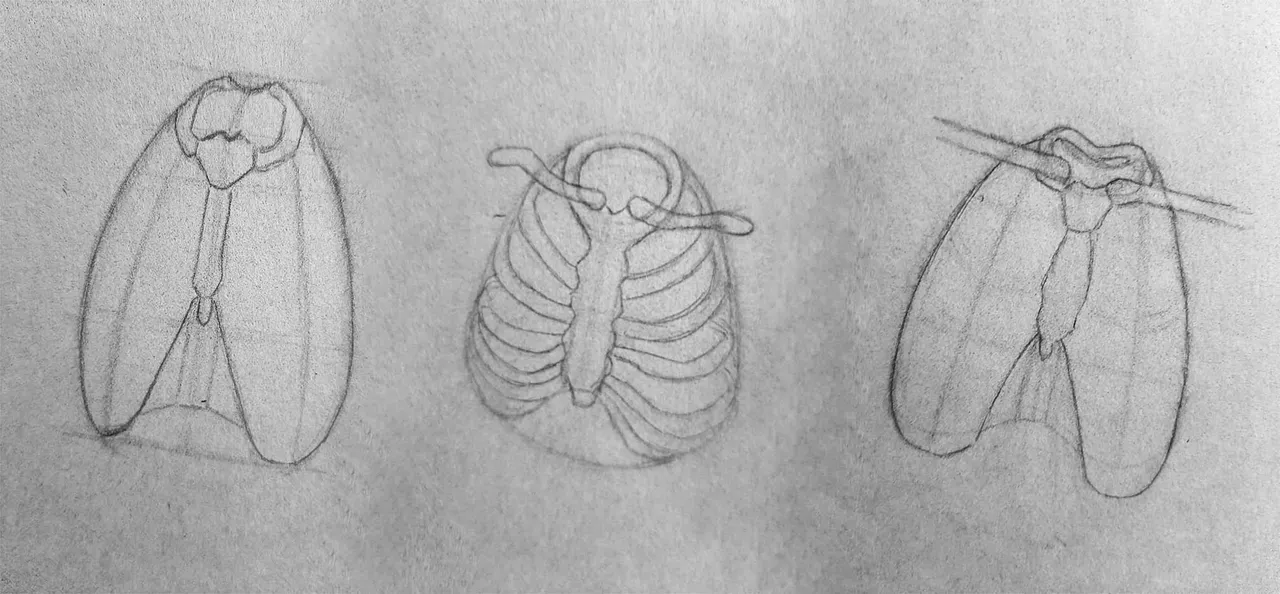
<
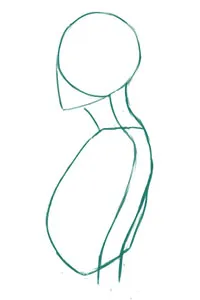 Rib cage is inclined, the neck too in the opposite side, to ensure balance.
Rib cage is inclined, the neck too in the opposite side, to ensure balance.
I will aboard later the muscles that rest on the rib cage; they help to identify the rib cage when it is not fully visible.
But a nice idea for beginner is to draw first on skinny models, because we can see their rib cage easily.

The sternum is the center part of the rib cage, which looks like a tie.
The bottom end can leaves a visible ball, or a hollow, depending on the person.
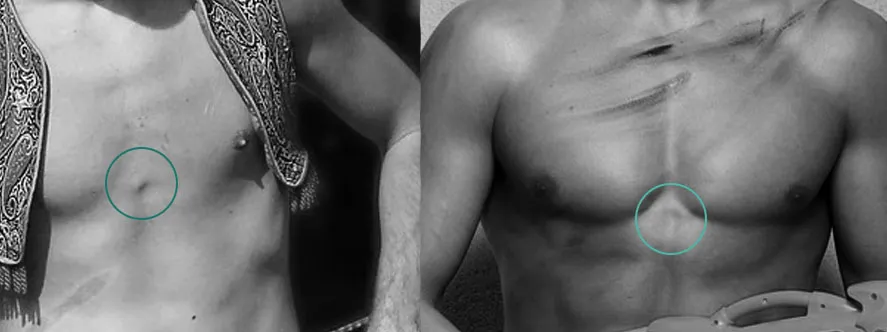

The Spine
The spine rely the head, the rib cage and the pelvis. She's very curvy.

The upper part is the cervical. The middle is the thoracic, then the lumbar, and finally the bottom end part is the sacral, resuming sacrum, and its very extremity the coccyx. You probably already know this, but it's never bad to give some reminders 😄
It is the tail of our ancestors that we have left. So, we can found this structure into mammal skeleton.
The spine has the role of support the weight of the head, but at the same time to be flexible to move. She is more curved as we go down the parts.
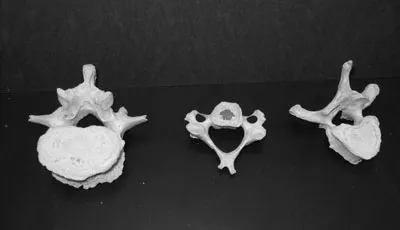
You can test by yourself by moving your back, it will be more meaningful 😉
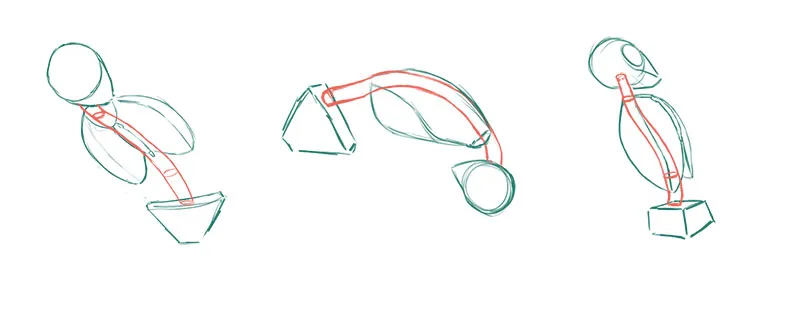
The first cervicals, the atlas and axis, are particular and specific for the head movements. This is the two which participates the most to the head movement. It can be compared with a pivot join.
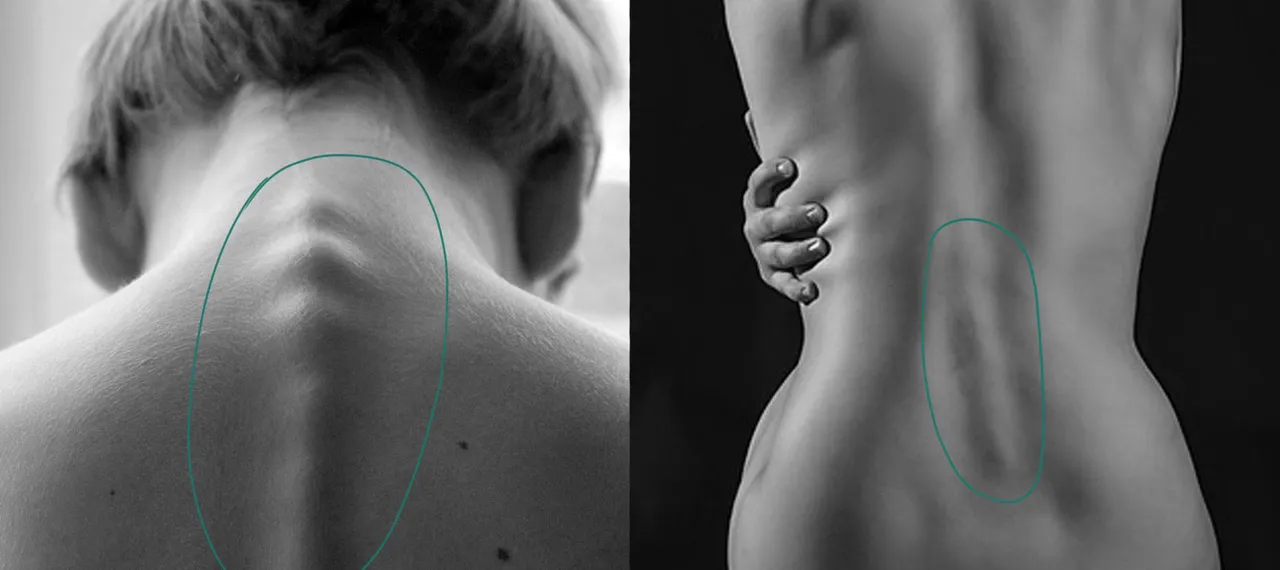
These visible vertebrae result of the spinous process, due to the form of them. Usually, we see only those above.
The first cervical we see is the 7th cervical vertebra, because there are ligaments behind the neck, that hide other cervicals.
-> The cervicals look more pointy, when the lumbar look more long.

The Pelvis
The pelvis is pretty difficult to draw. He has a particular form. But no problem, we can also simplify it. Let's see first its composition, and differences between genders :
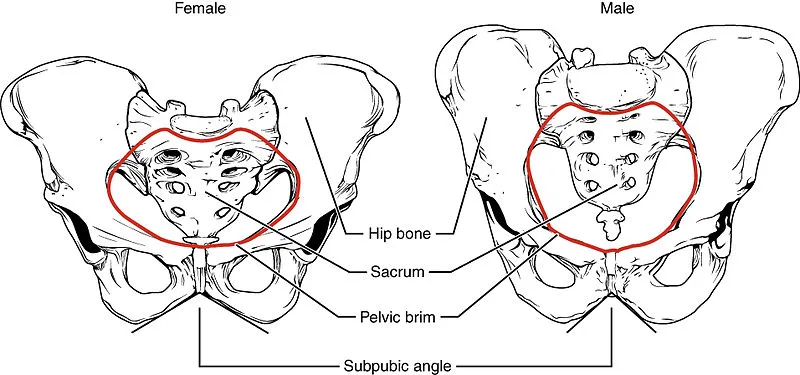
As you can see, the pelvis is pretty different between women and men.
- In absolute value, man's pelvis is larger. But in relation to body mass, this is the woman's pelvis which is the largest.
- The women's subpubic angle is wider than the men one.
This is the reason why women have a gap between legs (and legs muscles are more distant) when men have smaller, or don't have.

3 . This is a top view. The red circle show the inlet. We can see that women's one is very larger to male.
--> All these differences are obviously linked to the fact that women give life. 🤗
<
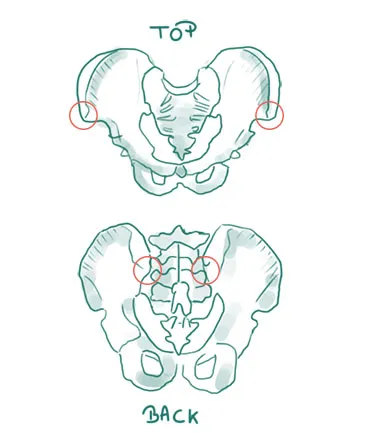 The red circles here show important points :
The red circles here show important points :
This is part of the pelvis bones which points over the skin. This is so an important element to consider when you drawing.
How to construct the pelvis ?
We can summarize it as a bucket shape.
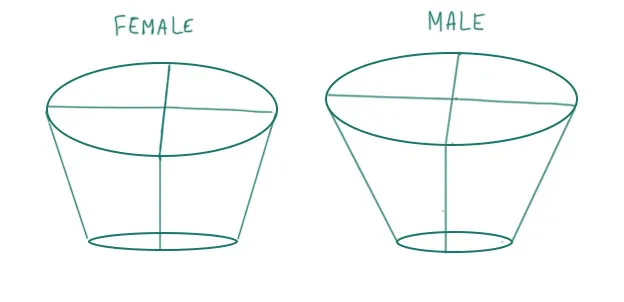
The top and the bottom are not circle, but ovals ; the top is very much larger than the bottom, and finally, as the bottom is flat, the top side is tilted.
With this base shape, we can construct more easily this complex part of body.
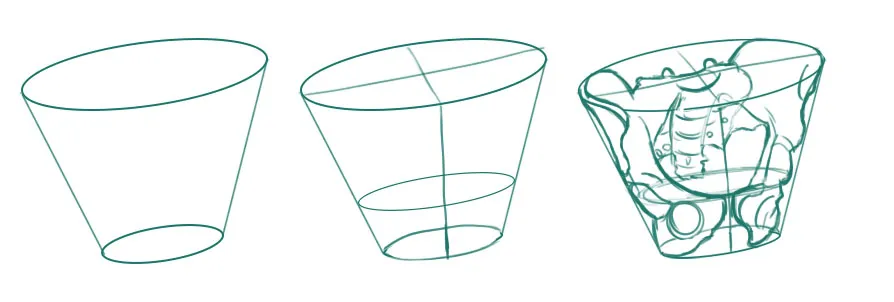
So, when we want to construct an entire body we can just resume it as in the first steps. Just putting the principal form of the pelvis, and its orientation.
/!\ But if you aren't comfortable with 3D, the best thing at first will be to see the pelvis only as a classical box. (with top side bigger than bottom, still)

The Shoulders Bones
It is composed by the clavicle and the scapula, which is relied to the clavicle on the top of the shoulder.
These two form what we called shoulder girdle. It surrounds the rib cage and is moving depending on the arm movement.
 The clavicle has a form of an arrow bow.
The clavicle has a form of an arrow bow.
It comes to rest on the sternum.
<
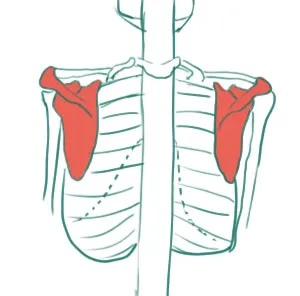 The scapula are like two triangles on both sides of the back.
The scapula are like two triangles on both sides of the back.
They also look like a kind of rear-view mirrors. 😉
It attaches to the clavicles at the front. Its surface is comparable to the hand's one.

Part two : The muscles
The Pecs

There are attached to the arm. This is the reason why they managed so much things.

It is composed of 3 parts : the clavicular head, a little strip, and the sternocostal head, the major part, and the abdominal part, which is bonded to the oblique muscle, that we will study after.
I will, in the same way as for hairs, doing an entire article about that, because I think there's a lot to say about it.
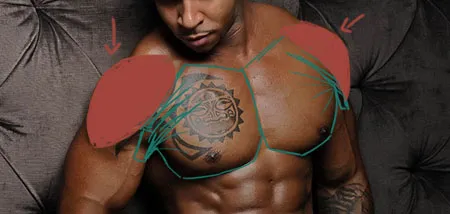 --> The Deltoid comes to rest on top of the pec. But I will aboard this muscle in the next article, that will talk about arms.
--> The Deltoid comes to rest on top of the pec. But I will aboard this muscle in the next article, that will talk about arms.

The Obliques
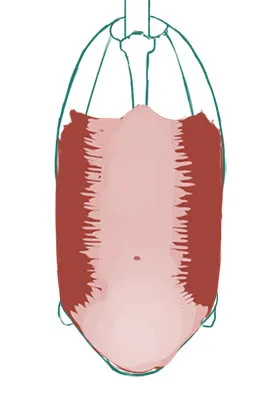 They connect the rib cage to the torso.
They connect the rib cage to the torso.
It allows a lateral inclinaison, and a rotation of the pelvis or the trunk.
They are divided in two : the internal oblique, and the external oblique.
When one side is stretched, the other side is flexed. The flexing side looks like a rolled-up sock. 😄 Because the muscle folds in on itself.

The Abs
Aren't abs a subject of fantasy? 😉
This is the large band of muscle in the lower middle torso, behind the obliques muscles.
His function is to flex the spine or bending the torso.
.
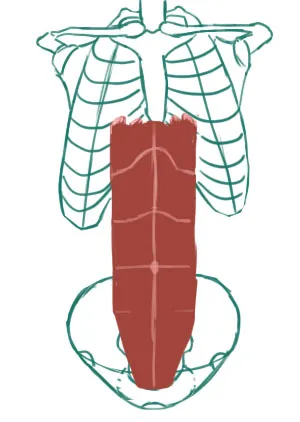 He begins on the appendice of the sternum, and finish in the superior pubic ramus. The part until umbilicus is called the 6 packs. Tendons come to separate these 6 forms. But these divisions aren't always exactly the same and straight. On some people, you have some wave lines, some quarters are bigger than others, etc.
He begins on the appendice of the sternum, and finish in the superior pubic ramus. The part until umbilicus is called the 6 packs. Tendons come to separate these 6 forms. But these divisions aren't always exactly the same and straight. On some people, you have some wave lines, some quarters are bigger than others, etc.
.
 Side view, it makes a curves like a B. But in some people, it's straighter.
Side view, it makes a curves like a B. But in some people, it's straighter.
But, remember, the form depends on the position ! Because the muscle can be working or relaxing.

The Lower Back Muscles
The Erector spinae
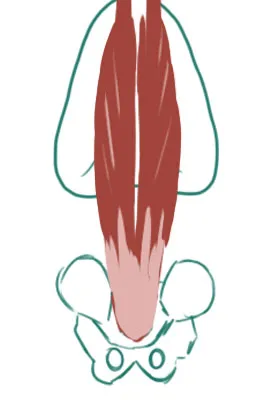 is a long muscle which traverses the back, over the spine.
is a long muscle which traverses the back, over the spine.
Its role is a kind of antagonist of the abs! Indeed, as the abs flexed the spine, the Erector spinae extended it. (When you lean back)
Latissimus Dorsi
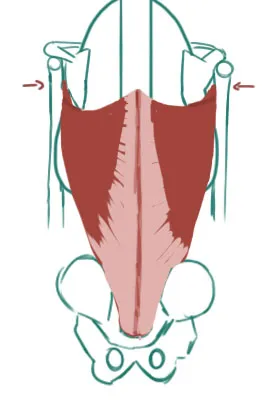 He also finishes in the sacrum. But this one comes to be attached to the arms. Such like the pecs.
He also finishes in the sacrum. But this one comes to be attached to the arms. Such like the pecs.
Its function is to lowering the arm. It is a very used muscle when swimming!

The Upper Back Muscles
Trapezius
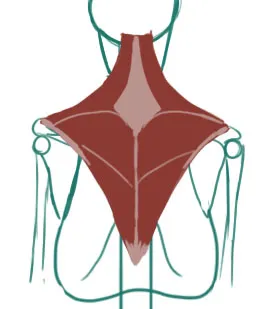 It's such a simple form. It's just an kite! It comes to rest on the clavicles and scapula. It can be separed between 3 parts, Upper, middle and lower part of trapezius.
It's such a simple form. It's just an kite! It comes to rest on the clavicles and scapula. It can be separed between 3 parts, Upper, middle and lower part of trapezius.
It makes possible the upper back movements such as shrug your shoulders, put your arms back,..
The large top surface of tendons is taking shape around the 7th cervical. It's a very important benchmark!
Serratus anterior
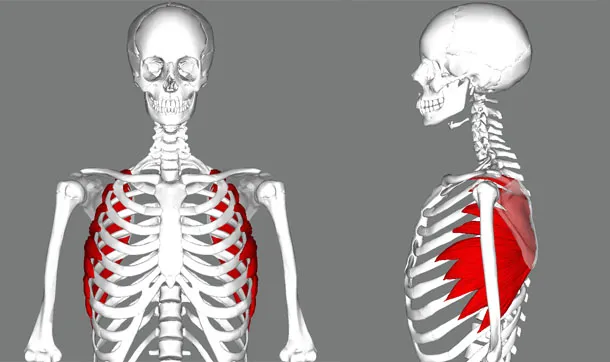
This is the muscle which envelops the rib cage.
He holds the scapula against the chest, and allows the ribs to be raised.
Rhomboid
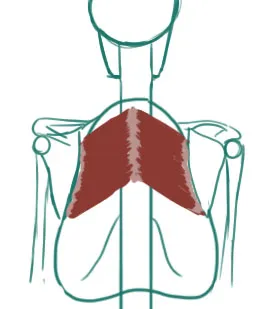
It's a muscle with a arrow form, which rely scapula to the spine. He comes under the trapezius. It can elevate, rotate and retract the scapula when the arm moves.

There are still some shoulders muscles that I didn't aboard here, because I prefer to put them on the next tutorial about arms.
So, next topic will speak about breasts. Youhou!
See you soon! 😊
